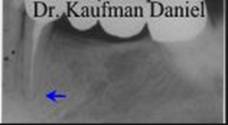In my search for new ways to provide better treatment for my patients I have discovered a novel innovation: piezosurgery which is a true revolutionary way to make treatment safer and simpler for the patient. Piezosurgery uses a low frequency ultrasonic energy to produces microvibrations that facilitate safe and precise treatment for hard tissues like tooth and bone, without damaging underlying vital structures like nerves, oral lining and vessels. Due to the fast action of the tip there is need for only gentle touch to achieve the needed function. In addition to the great advantages for the patient, it overcomes technical difficulties for myself, such as visibility and debris removal through the internal irrigation mechanism. But the piezosurgery not only makes the procedure safer and gentler it has been shown to provide more favorable healing. In a recently published article“Piezosurgical treatment of crestal bone: quantitative comparison of post-extractive socket outcomes with those of traditional treatment.” it has been found that less bone has been lost following extractions with the Piezosurgery unit in comparison to the traditional technique.
We have purchased the newest state of the art Mectron Piezosurgical touch unit to join this revolution and continue to provide the best treatment for our patients. This way I can better perform treatment for gum disease, complex root canal treatment and surgical procedures like wisdom tooth removal and implant placement.


